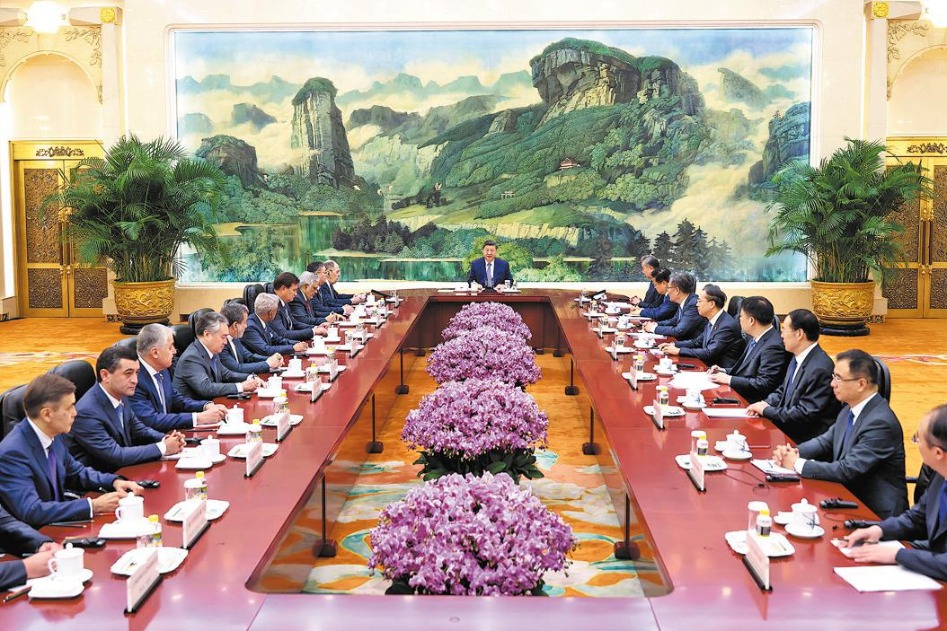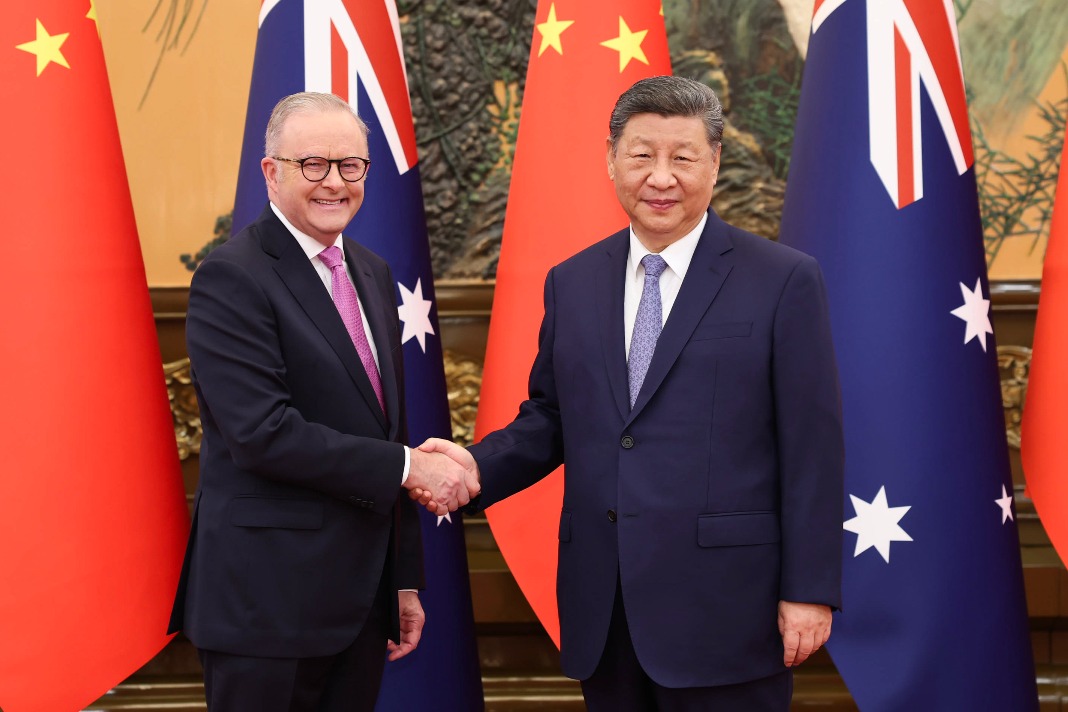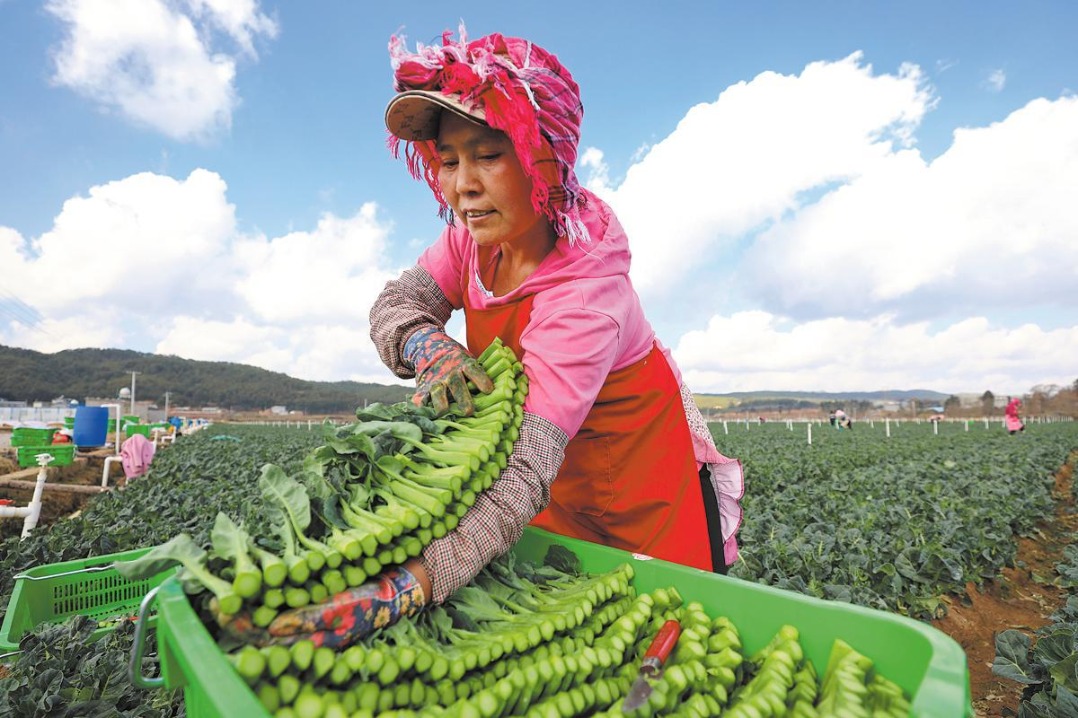Taking a tour of theSilk Road

A National Geographic photographer brings the Belt and Road to life with unforgettable and often haunting images
It took Michael Yamashita a few minutes to realize why he was at the Carter Center in Atlanta.
Then the longtime National Geographic photographer, who is said to have one of the world's largest catalogues of Asian images, saw a picture of US President Jimmy Carter shaking hands with Chinese leader Deng Xiaoping.
"I walked into the museum here and I thought, 'Yes, now I get it,'" he said.
The Silk Road Journey exhibition in late March presented Yamashita's breathtaking shots covering epic expeditions of explorers from different epochs and backgrounds - one who "discovered" China and another who made the country's innovative prowess known to the outside world.
Over five years, Yamashita retraced the trail of 13th-century Venetian explorer Marco Polo to Yuan Dynasty (1279-1371), passing through Central Asia and working his way through the Xinjiang Uygur autonomous region.
Later, the award-winning photographer traveled the "sea silk road" established by Zheng He, the Yunnan-born admiral who took Ming Dynasty (1368-1644) trade ambitions throughout Southeast Asia and all the way to East Africa.
"Zheng is the world's greatest explorer that no one knows anything about," Yamashita said.
Yamashita's work captures glimpses of the lifestyles that gave rise to ancient Chinese innovations shared across these geographic chains, including silk, aquaculture, gunpowder and navigational aids like the compass.
While the Atlanta exhibition ended March 29, the same set of Yamashita's works - which underscore China's historical global outreach - will be on display during the Belt and Road Forum of International Cooperation in Beijing before heading next to the United Kingdom.
"The Carter Center was interested in hosting this exhibition because we believe there is huge potential for the US and China to work together on the One Belt, One Road Initiative," said Yawei Liu, director of the Carter Center's China Program.
Stephanie Carey, an employee of global nonprofit CARE, went to the exhibition mainly to see photos of regions in Southeast Asia where she has traveled. She left with a better understanding of China's initiative and its role in the world.
"China is such a world power, and seeing this exhibit confirmed that. They've always been pretty strong in trade, and that's one of their main strengths that I see in the world today," Carey said, noting that a photo of Lamu, an island off the coast of Kenya, made an impression on her.
For Monica Johnson, a recent Georgia State University graduate who is about to spend a year in China, the exhibition gave her a deeper appreciation for the culture that will soon surround her.
"A lot of times photographs focus so much on the landscape and the scenery - time and space - and I felt like he focused on the people that inhabited that time and space. I could see the humanity in it," she said.
"It added to the excitement, to see the images and to know that soon I'll be around it and immersed in it."
Walking through the exhibition, Yamashita made it clear he values the humanity in his photos, which he describes with an enthusiasm that can almost give the impression that he's seeing them for the first time.
"Photographers are paid to be lucky," he said, revealing the not-so-secret tricks of his trade: get up early, find a great setting and let the "good light" of dawn and dusk do the work.
In one photo, a farmer walks serendipitously into the shot, creating a silhouette against an orange sun reflected on a lake. In another, Xinjiang factory workers pour into street where snow creates an impressionistic effect in black and white. Then a red umbrella opens up, and Yamashita presses the shutter button.
"You have the vision," he said, "then you wait for the moment."
As for China, Yamashita never set out to have one of the world's largest collections of works of the country; he just followed intriguing stories through locales that now would be next to impossible for a foreigner to access in the same way.
He's been working in OBOR countries on and off for the last 30 years.
"It's not like I planned it - 'Oh, China's going to be great someday and I'm going to cash in,'" he said. "The inspiration or the experience leads to another."
The Carter Center exhibition helped Yamashita see how his work helps China showcase two periods of unique engagement with the globe.
And these historical narratives are gaining steam as China plays a stronger role in regional and global affairs.
"You can see it when they're traveling, there's a confidence there," he said of Chinese tourists and young people. "They're taking an interest in their own history."
| Sunset illuminates the 12th century Jame Mosque known for its striking blue Persian tile work in Yazd, Iran. Photos By Michael Yamashita |
| In the dry season, the Mekong River becomes shallow enough to walk from Laos into Thailand. |
| This windswept dune in Dunhuang, Gansu province, was known as the "singing sand dune" (Mingshashan in Chinese) due to the sound the wind makes as it blows over the 1,000-foot-high mountain of sand as Marco Polo described it when he passed by 700 years ago. |
| Kunyang, Yunnan province, the birthplace of Zheng He, is a Muslim town at least 30 days' walk to the sea back then. How did he ever learn the nautical skills that would take him on voyages beyond the known world from a landlocked background? |
| Minab, Iran - Marco Polo wrote about the "black skinned people" of the western coastal region along the Persian Gulf. The descendants of African slaves, the women here wear a distinctive hijab, a thick, embroidered red mask. |
| Along the road from Kerman to Hormuz, a bustling port in Marco Polo's day, a sulfurous and copper colored hot spring can be found. Polo was impressed by the "many natural hot baths which have excellent virtues: they cure the itch and several other diseases". |
(China Daily USA 05/05/2017 page11)
Today's Top News
- Economic growth momentum expected to continue
- Tianzhou 9 embarks on cargo mission to Tiangong
- SCO urged to play more active role
- Green, beautiful, livable cities call for modernized urbanization path
- Urban renewal beyond economic growth
- Xi meets Russian FM in Beijing




































